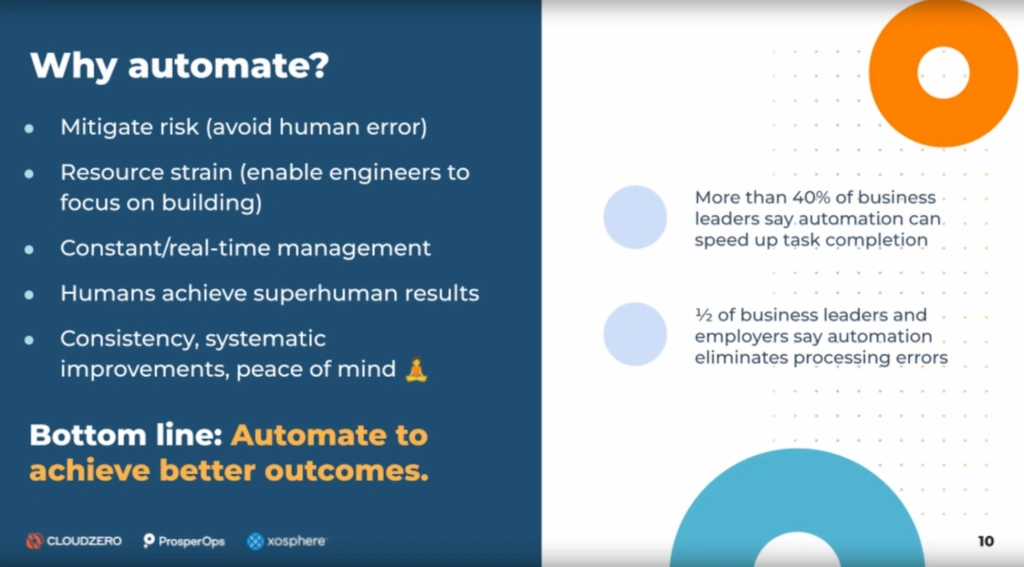If you’ve spent any time poking around our blog, you’ve noticed one thing: At CloudZero, we are passionate about FinOps.
More than that, we’re passionate about bringing the most useful and up-to-date information on FinOps to our customers to help them better navigate their journeys toward cloud cost optimization.
Our founder and CTO, Erik Peterson, recently sat down with Alan Hand (Founder and CEO of Xosphere), Steven O’Dwyer (Senior FinOps Specialist at ProsperOps), and Mike Fuller (CTO of the FinOps Foundation) for an information-packed discussion on how to automate FinOps within your organization, the best practices you need to know, and some implementation tips these experts recommend following for best results.
The first module of this series — which explains in detail what FinOps is and why automating it is so crucial — can be viewed in its entirety here, but you can also check out a brief summary of the topics below.
What Is FinOps And Why Should You Automate It Within Your Business?
The FinOps Journey
The full video contains explanations of the core FinOps principles, phases, personas, stages of maturity, and domains.
Understanding these concepts is crucial to your progress on the FinOps journey, so we would highly recommend brushing up on the details if you’re not already familiar with them. It’s also valuable to make connections within the FinOps Foundation.

Essentially, FinOps is an ongoing process your organization can use to measure cloud costs and then manage them effectively. The ultimate goal is to bring your costs under finely tuned control and enable you to make educated decisions based on your unique business context.

Everyone starts somewhere — see the stages of maturity for more information — and some of your teams may be in different FinOps phases simultaneously.
As long as you’re continuously making iterative improvements over time and gradually bringing your organization into alignment over shared goals, you’re probably on the right track.
Why is automation of FinOps so important?
FinOps is people-centric. It’s all about bringing individuals, teams, and departments together, giving them shared financial goals, and empowering them with the information they need to take charge of cloud spending.
However, don’t let the reliance on human participation fool you; there is plenty of room for automation of FinOps processes.

Take the process of rate optimization, for example.
With platforms like Xosphere and ProsperOps, you can find heavily discounted Spot Instances and maximize your AWS savings automatically, without having to manually search for prospects that fit your needs. Combine that with the optimization insights you can receive from CloudZero, and you’ll know exactly when a particular discount would be a great match for your situation.
You may also want to consider automating the way your employees receive their FinOps education.
For example, you could set up a streamlined workflow that tracks who has taken certain courses, the dates each person is due for continuing education, and the topics your employees will need to learn in the future to stay current on their qualifications.
Perhaps even more importantly, automation allows for the free flow of information between people in your organization. Unlimited access to detailed, up-to-date information enables teammates to take accountability for their own spending decisions and keep track of real-time budgets.
Over time, these habits will encourage a company culture to take shape around the idea of cost efficiency.
Automation also acts as a force multiplier within your organization, allowing your teams to accomplish exponentially more work with fewer resources.

Want To Learn More About Automating Your FinOps Processes?
Check out the full video for much more detail — and stay tuned until the end for our experts’ advice on how to get started automating FinOps in your organization!







